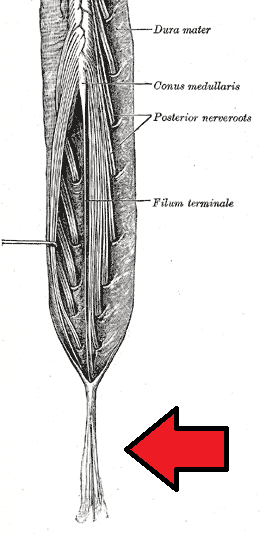Cauda Equina Syndrome

Cauda equina syndrome (CES) refers to a group of symptoms that occur when nerves in the cauda equina (a collection of nerve roots that spread out from the bottom of the spinal cord) become compressed or damaged. These nerves roots connect the central nervous system and peripheral nervous system. CES can lead to pain, numbness, and weakness in the lower back, pelvic area and legs; "foot drop"; problems with bowel or bladder control; sexual dysfunction; and even paralysis. CES is considered a medical emergency and requires hospitalization. Therefore, people with unexplained onset of symptoms should seek medical attention as soon as possible and consult with a neurologist or neurosurgeon.
CES is most commonly caused by a herniated disk in the lumbar spine. Other causes of CES may include a birth abnormality (such as spina bifida), a spinal infection or tumor, trauma or injury to the lower back, spinal stenosis, a spinal arteriovenous malformation, and complications after spinal surgery.
CES can be difficult to diagnose since symptoms vary and they may mimic other conditions. Tests that may be used to diagnose CES include MRI, CT scan, and myelogram (a special type of X-ray of the spinal canal).
Treatment usually targets the underlying cause of CES (removing the cause of nerve pressure) and most often involves urgent surgery to prevent permanent neurologic impairment. How well a person recovers from CES often depends on the underlying cause and how promptly they are treated. Symptoms are more likely to improve or go away if the cause is identified quickly and treatment begins right away. Some people have significant improvement of symptoms and quality of life after treatment. However, others may have permanent neurologic impairment, chronic pain, and/or mental health problems due to the impact of symptoms on social life and relationships.
CES is most commonly caused by a herniated disk in the lumbar spine. Other causes of CES may include a birth abnormality (such as spina bifida), a spinal infection or tumor, trauma or injury to the lower back, spinal stenosis, a spinal arteriovenous malformation, and complications after spinal surgery.
CES can be difficult to diagnose since symptoms vary and they may mimic other conditions. Tests that may be used to diagnose CES include MRI, CT scan, and myelogram (a special type of X-ray of the spinal canal).
Treatment usually targets the underlying cause of CES (removing the cause of nerve pressure) and most often involves urgent surgery to prevent permanent neurologic impairment. How well a person recovers from CES often depends on the underlying cause and how promptly they are treated. Symptoms are more likely to improve or go away if the cause is identified quickly and treatment begins right away. Some people have significant improvement of symptoms and quality of life after treatment. However, others may have permanent neurologic impairment, chronic pain, and/or mental health problems due to the impact of symptoms on social life and relationships.